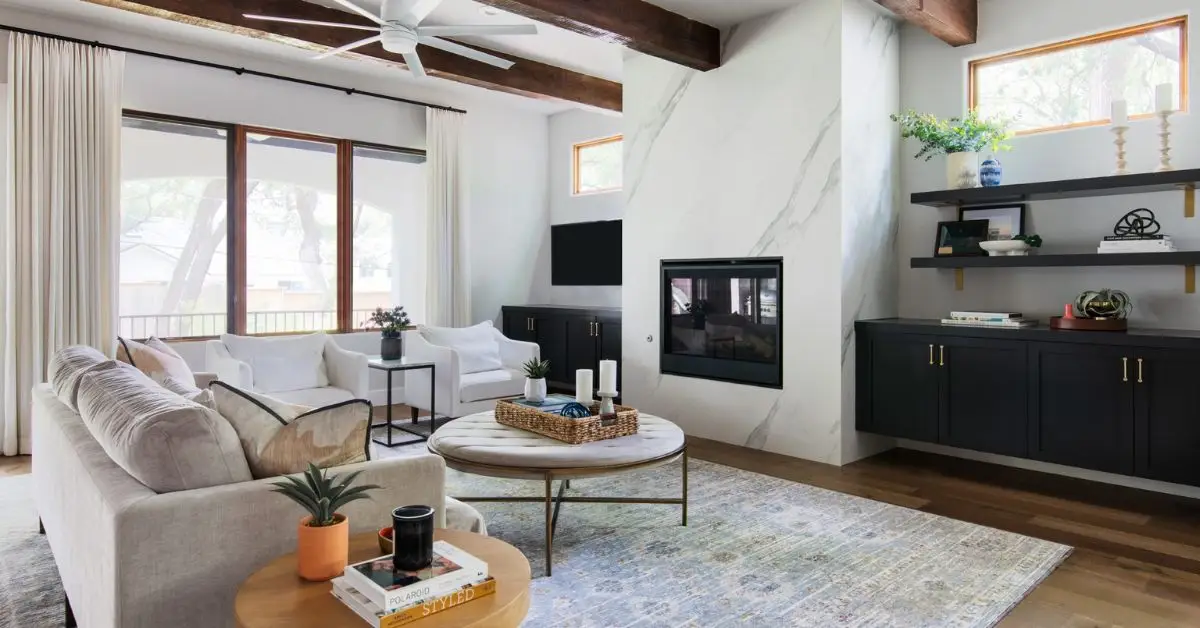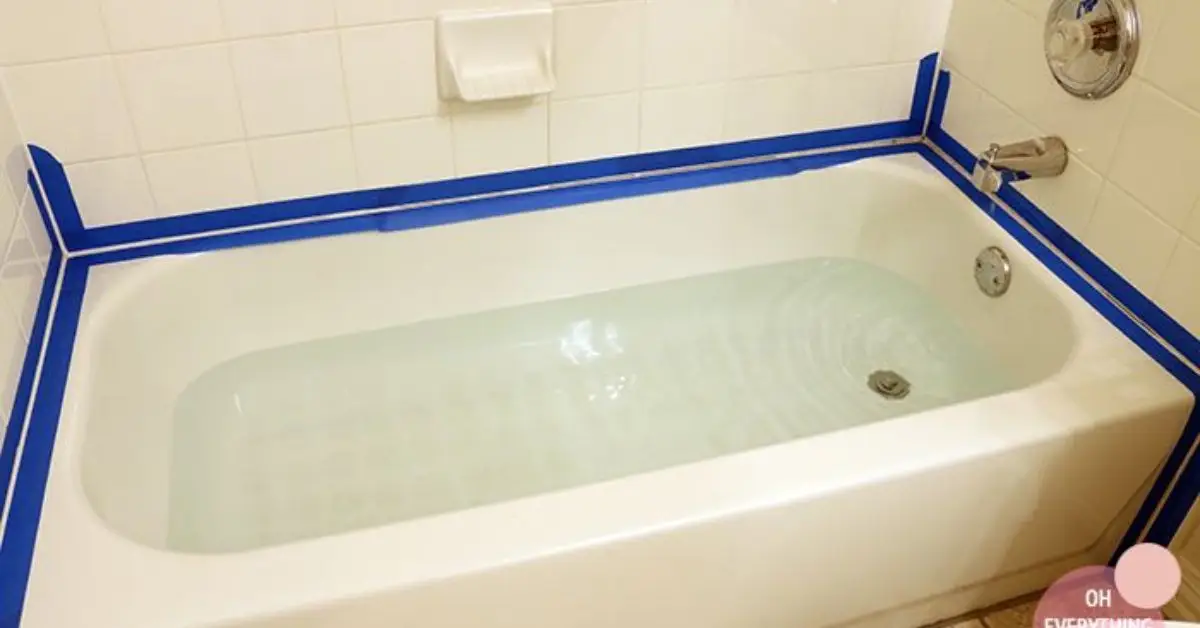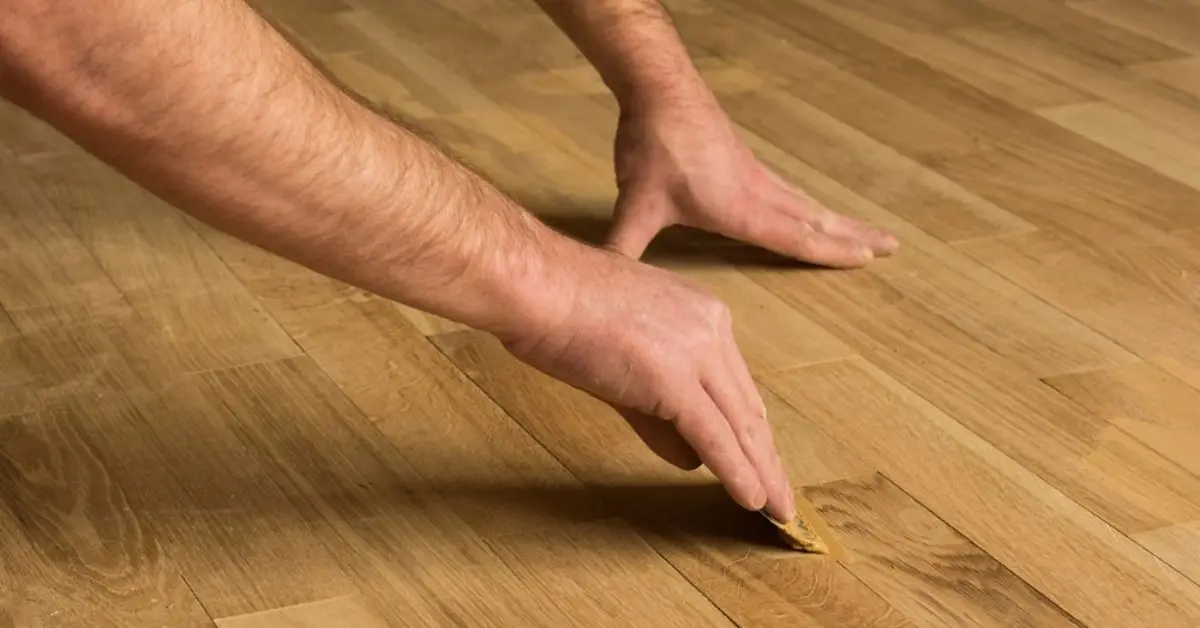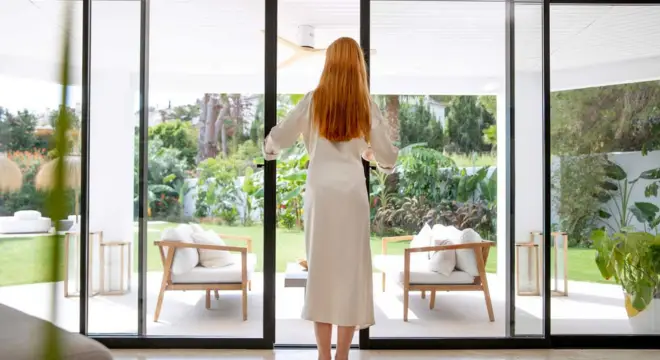No-Buy July? Here’s Why Free Home Fixes Are Your Secret Weapon
Every year when July rolls around, I like to hit pause—not just on spending, but on mindless buying. You’ve probably seen the “No-Buy July” trend gaining traction online. It’s not about deprivation. It’s about control. Resetting habits. Using what you already have instead of constantly reaching for more.
And when it comes to our homes? That mindset shift can be powerful.
The truth is, you don’t need a Home Depot haul to improve your space. A ton of fixes—real, meaningful upgrades—cost absolutely nothing. No fancy tools. No shopping carts. Just time, awareness, and a willingness to roll up your sleeves.
In fact, a recent study shared by the New York Post said over 60% of Americans are leaning into DIY home fixes this year, mostly to save money and feel more in charge. That tells me this isn’t just a budget trend. It’s a movement. We want homes that feel good to live in—not just look good on Instagram.
So instead of sitting out No-Buy July, let’s use it as a challenge.
In this article, I’ll walk you through 10 completely free home fixes I swear by—stuff that can make your home cleaner, brighter, more functional… without spending a dollar. These are practical, not Pinterest-perfect. No fluff. No fake hacks.
And if you stick with me till the end, I’ll also show you one trick even the big home blogs aren’t talking about—something that saved a UK homeowner £15,000 on renovations. (Hint: it doesn’t involve a single trip to the store.)
Ready? Let’s start where all good fixes begin—with what you already have.
Start with What’s Hiding in Plain Sight
Before you rearrange a single cushion or move furniture around, stop and look at what you’ve been ignoring.
I’m talking about the forgotten spots: the baseboards caked with dust, the gunk behind the fridge, that weird film on your windows. You know the places. We walk past them every day, but when they’re finally cleaned—really cleaned—your whole home feels different.
And the best part? It costs nothing but a little time and focus.
Start small. One drawer. One corner. One windowsill. Grab an old toothbrush and hit those crevices. Use a bit of vinegar and water to wipe down glass and tile. You’d be shocked how much light literally comes back into a room once the grime’s gone.
A few ideas that work wonders:
- Wipe down door handles and light switches (they’re germ magnets)
- Clean under the bed (you’ll probably find lost socks and your missing charger)
- Dust the tops of cabinets and bookshelves
For more powerful, chemical-free ways to clean your home using pantry staples, check out these 8 must-try vinegar and baking soda hacks.
This isn’t glamorous work—but it’s the kind of effort that changes the feel of a space instantly.
You don’t need more stuff to feel better in your home. Sometimes, removing layers—of dust, clutter, buildup—is the fix you’ve been craving.
Pick one neglected area right now. Clean it for 10 minutes. Then step back and notice how different it feels.
Rearrange What You Already Own — And Watch the Room Transform
You don’t need a new couch. You need a new perspective.

One of the fastest, zero-cost ways to refresh your home is by moving things around. Not buying anything new—just rethinking what’s already in front of you.
I do this every few months. Not because I’m bored, but because our needs shift. The light changes. Our routines change. And suddenly, that armchair might work better by the window. That shelf? Maybe it’s too cluttered to feel good anymore.
Start by asking: Does this layout actually serve how I live right now?
You can:
- Swap the side table from the bedroom into the living room
- Move your bed slightly to catch more natural light
- Pull art or décor from one room into another
- Flip a rug, rotate cushions, or even change where your mirror hangs
None of this costs a thing. But it creates movement, freshness—and sometimes, emotional clarity too.
I once cleared out a corner I hadn’t touched in years. I turned it into a cozy morning nook with a chair I already owned. It became my favorite space in the house, and I didn’t spend a single dollar.
Pro tip: This is also the perfect moment to declutter as you go. If you’re moving something and realize you don’t even like it anymore, let it go. Donate it, give it away, or post it on a freecycle group.
Reddit moment: Someone on r/HomeImprovement shared how they “shopped their own home” before buying décor. They ended up reusing old picture frames from storage and created a fresh gallery wall—for free. That’s the mindset shift No-Buy July is all about.
Try this today: Pick one room. Spend 15 minutes moving or removing 3 things. The change might be subtle—but your brain will feel it.
Small Fixes, Big Wins: The Maintenance Checks You’ve Been Avoiding
Let’s be honest—most of us don’t think about door hinges or faucet drips until something breaks. But here’s the thing: the little issues? They pile up. And fixing them now, for free, can save you major money later.
Think of this like a mini home checkup. No tools you don’t already have. No experience required.
Here’s where I always start:
- Loose handles, knobs, or hinges? Tighten them with a screwdriver.
- Light bulbs out? Swap in what you already have (check that drawer full of “I’ll get to it later” items).
- AC vents and ceiling fans? Dust them. You’ll breathe better instantly.
- Squeaky doors? A little cooking oil on the hinges actually works if you don’t have WD-40.
- Sticky drawers or windows? Wipe the tracks and add a bit of soap or candle wax to smooth them out.
These sound small. They are small. But they make your home feel more functional—and way less frustrating.
The overlooked win? Drains and toilets.
Hot water + dish soap can unclog minor slow drains. And if your toilet runs nonstop, it’s likely a flapper or chain issue. A quick YouTube video can walk you through it in 3 minutes.
According to LendingClub’s DIY study, tasks like these are the top things people hire help for—when most of them can be fixed for free, in under 10 minutes.
Fixing something—even tiny—makes you feel competent. Like, “I got this.” That confidence carries into other parts of your life too.
Try this today: Pick one thing that’s been broken or annoying for months. Handle it. It’ll take less time than doom-scrolling, and the payoff is real.
This One Tiny Fix Can Lower Your Bills (And You Already Have What You Need)
If I told you that a $0 fix could help you stay cooler in the summer and warmer in the winter—would you believe me?
Let me introduce you to the most underrated DIY upgrade: re-caulking.

Most people don’t realize that the little cracks around their windows, doors, sinks, and tubs silently let in outside air and moisture. It’s one of those things you don’t see, but your energy bill definitely feels.
Here’s what I do every few months (especially during No-Buy July):
I walk around the house and check for:
- Cracked or peeling caulk near windows or door frames
- Gaps around bathtubs or kitchen sinks
- Areas where air or moisture might be sneaking in
If you’ve got a leftover tube of caulk in the tool drawer—perfect. But even if not, you can often remove and reuse old caulk by softening it with warm water and a putty knife. Some folks even skip reapplying and simply plug micro gaps with wax paper or tape as a temporary seal. Want more ways to stay cool without blasting the AC? Don’t miss these 10 easy summer home projects that keep your home comfortable—and your wallet happy.
According to LendingClub, sealing up these air leaks can cut utility bills by up to 10% a year. That’s not just smart—it’s preventative care for your house.
Pro tip: Run your hand around window edges in the evening. If you feel a draft, it’s a problem. No tools needed—just your fingertips and a little patience.
I promise, once you start noticing these gaps, you won’t be able to unsee them. And fixing them? It gives you that weirdly satisfying “adulting” buzz we all secretly love.
Quick action: Pick one window and one sink area. Check the seals. If they’re crumbly, peeling, or missing altogether—this is your free fix moment.
Make It Look New—Without Buying a Drop of Paint
You don’t need to repaint an entire wall to make your home look fresh. You just need to fix what’s bugging your eye.
We all have those little marks and dings we’ve learned to ignore—scuffed walls, chipped trim, stained switch plates. But here’s the good news: most of these can be touched up for free.
I like to keep a “mini paint kit” from leftover projects—tiny jars of old wall colors, a couple of brushes, maybe even a sponge. If you’ve got any old paint cans stored in a cabinet or under the stairs, crack one open. Odds are, the color still matches just enough to do the job.
Here are a few zero-cost tricks I use regularly:
- Touch up corners or trim with leftover paint (a Q-tip works in tight spots)
- Use Magic Erasers (or even a damp sponge with baking soda) to scrub scuffs off walls
- Pop off dirty switch/outlet covers and clean them with dish soap—they’ll look brand new
- Flip or rotate rugs and cushions to hide wear patterns and brighten the room instantly
And remember that “oops paint” section at hardware stores? You don’t even need to buy anything—just knowing it’s there helps you mentally shift from “I need a whole gallon” to “I just need a dab.”
I once used white toothpaste to fill a small nail hole in a guest room. Smoothed it with a card, touched up the spot with a paint sample I had—and it looked professionally patched. Zero cost. Zero trace.
These small visual fixes change how a room feels. Cleaner. Cared for. Less chaotic. You don’t need to gut-renovate to feel good about your space—you just need to love the details again.
Try this today: Find one scuffed or chipped spot you’ve been ignoring for months. Fix it in 5 minutes. That’s it. One quick win—and you’re back in control.
Fix Your Floors Without Lifting a Single Tile
Floors take a beating. You walk on them every day, drag chairs across them, drop things—life happens. But here’s the thing: you don’t need a pro or pricey tools to make your floors look better.

In fact, a few of the best fixes? You can do with stuff already lying around your home.
Let’s start with hardwood or laminate. Got scratches? Try this trick:
- Rub a raw walnut directly into light scratches. The natural oils darken the mark and blend it.
- No walnuts? A dab of olive oil and vinegar on a soft cloth can restore shine and smooth out scuff marks.
Seriously. I did this on a hallway floor once and it looked noticeably better—like I’d mopped with magic. (Bonus: your house will smell great too.)
If you have carpet, don’t ignore dents from furniture legs. A quick way to lift them:
- Place an ice cube in the dent, let it melt, then fluff the fibers with a fork or toothbrush.
And if you have area rugs curling at the corners? Flip them. Stack books overnight. Problem solved. No need for rug tape or buying new mats.
Reddit tip I loved: Someone used leftover floor polish from years ago and gave their entire wood floor a buff with a pair of old socks under their feet. Budget: $0. Satisfaction level: very high.
It’s not about making your floor perfect. It’s about making it feel cared for. And once you do that, your whole home feels more grounded.
Quick win: Pick one visible scratch or dent in your floor and try a DIY fix today. It won’t just improve your space—it’ll remind you that small effort still matters.
The Front Door Test: If It Feels Neglected, So Does Everything Else
You know that feeling when you walk into a hotel or café and everything just feels good from the entrance? That’s not magic. It’s maintenance—and you can create the same effect at home, without spending a dime.
I call it the “Front Door Test.” Walk outside, then come back in as if you’re a guest. What do you see first? Is it clean? Inviting? Does it feel taken care of?
Most people think curb appeal is about expensive landscaping or new siding. But the truth? The tiniest refreshes often make the biggest difference.
Here’s where to focus:
- Wipe down your front door, handles, and doorbell—grime builds up fast
- Sweep the porch or entry, knock down cobwebs, shake out the mat
- Clean windows and window sills—inside and out
- Wash your outdoor lights with a cloth and mild soap (they’re probably covered in bugs)
Inside the entryway, less is more:
- Clear shoes or clutter that builds up by the door
- Add a chair or hook if needed, but only if it solves a real problem
- Light a candle or spray something fresh—our senses remember scent first
These small changes create a first impression for you. And that matters. When your entry feels intentional, the rest of your home follows.
I had a friend who cleaned her front porch during No-Buy July, added a mirror she already owned to the entry wall—and swore it felt like she “upgraded” her home emotionally. Not materially. Emotionally.
Try this today: Step outside. Come back in slowly. What feels off? Fix one thing—dust, sweep, declutter. You’ll feel the shift immediately.
It’s Not Just About Fixes — It’s a Mindset Shift
Let’s be real for a second: most home problems don’t come from bad luck—they come from neglect.
Not intentional neglect. Just life. We’re busy. We’re tired. And we tell ourselves we’ll get to that loose hinge or leaky tap “later.”
But here’s what I’ve learned over the years: home maintenance isn’t about perfection—it’s about habits.
No-Buy July is the perfect time to build those habits. You’re already in a “reset” mode. Why not use it to make your home easier to live in… long-term?
Start with a small system:
- Make a running list of what needs attention (I keep mine in my Notes app)
- Block 15 minutes once a week for a “home tune-up”
- Get the family involved—kids can dust baseboards or tighten drawer knobs
This isn’t about doing everything yourself. It’s about learning what you can do—and not being afraid to try. Seasonal prep is part of long-term care too—especially when it comes to your roof. Learn how to protect your home from ice dams and winter leaks before problems start.
According to a Bankrate study, unexpected home repairs cost homeowners an average of $1,953 a year. But most of that? Preventable, if you catch it early.
Don’t know how to fix something? That’s what YouTube is for. I’ve learned how to patch drywall, reset a garbage disposal, and even fix a squeaky floorboard—just by watching someone walk through it.
Architectural Digest even listed “basic DIY skills” as something every homeowner should master—and I agree. It’s not just about saving money. It’s about feeling capable.
Try this today: Set a 15-minute timer and do one proactive check—look under your sink for leaks, test your smoke detector, or clean out your dryer vent. You’re not just fixing problems—you’re building confidence.
Forget Buying — Trade Skills and Get the Job Done
This one’s not on most DIY lists—and that’s exactly why it works.
When we think about fixing up our home, we usually see two options: do it ourselves, or pay someone else. But there’s a third path that’s surprisingly powerful—bartering.
You’ve probably got a skill someone else needs. And they might have a skill you need—like patching drywall, rewiring a fixture, or helping with repairs you don’t want to risk doing solo.
Here’s how to start:
- Post in local Facebook groups, WhatsApp housing chats, or community bulletin boards
- Be honest: “Hey, I’m great at [insert your skill] and looking for help with [insert home project]. Interested in trading?”
- Set clear expectations. Respect each other’s time. Keep it equal.
It might feel old-school, but I’ve seen it work in real life. A friend of mine offered resume writing in exchange for someone helping her build closet shelves. Both walked away happy.
If you don’t have a direct skill to swap, offer time—babysitting, plant-watering, or even just labor on a bigger task. Value doesn’t have to be “professional.”
In a world built on transactions, bartering feels refreshingly human. And during No-Buy July? It’s the ultimate loophole.
Try this today: Make a list of 2–3 tasks you’d like help with—and 2–3 skills you could offer in return. Then post one message in a local group. You never know who’s out there, waiting to trade.
Your Home’s Better Than You Think — You Just Needed to See It
If you’ve made it this far, you already get it.
This isn’t just about saving money or surviving No-Buy July. It’s about something deeper: building a home that reflects care. That shows up in the little things—the tightened hinge, the clean entryway, the scratch that’s no longer visible.
Every time you fix something yourself, no matter how small, you’re building equity. Not just in your property—but in your own confidence.
You’re not just saving $6 USD here or $12 USD there. You’re shifting your mindset. You’re creating habits that compound over time.
And it adds up:
- A leak you seal today saves you a costly water bill next month
- A clean, safe, inviting entryway makes you want to come home
- A working light switch or smooth drawer reminds you that you’re not behind—you’re in control
That’s the real win. That’s the upgrade money can’t buy.
One last challenge: Pick three fixes from this list. Just three. Do them this week. Take before-and-after photos if you want. Track how they make you feel—not just how they look.
Then ask yourself: What else can I handle that I used to avoid?
Chances are, the answer’s more than you think.
Save this article. Revisit it next month. Set a reminder. Even if you only do one fix a week, you’ll be 40+ steps ahead of where you started.
And if this helped you, share it with someone who needs it. We all deserve to feel better in our homes—even when we’re not spending a single dollar.
Want more smart, budget-friendly ways to upgrade your home? Visit Build Like New for real tips that actually work.
Disclaimer: The information in this article is for general guidance and educational purposes only. Always follow safety precautions and consult a licensed professional for complex repairs or structural work. Build Like New is not liable for any damages resulting from DIY projects performed without proper tools, skills, or safety measures.


